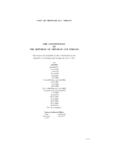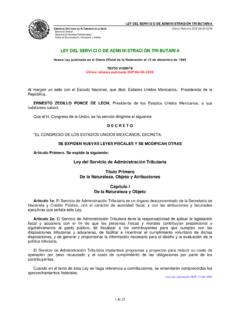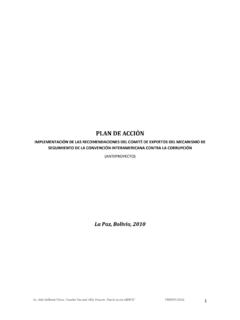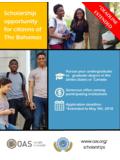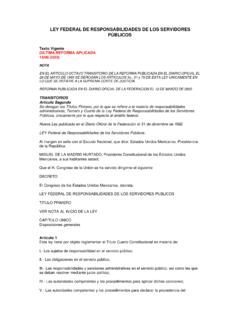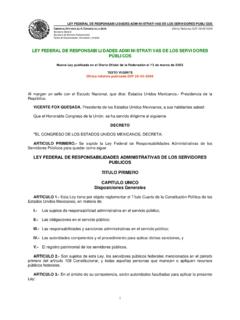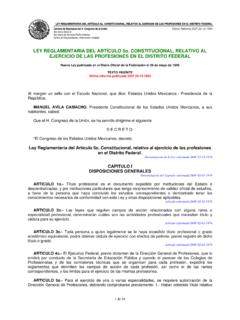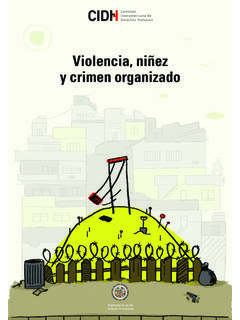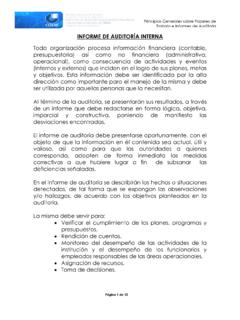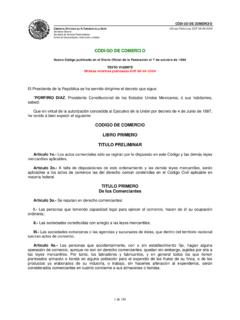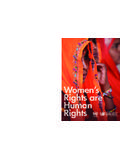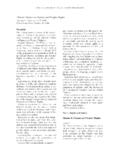Transcription of Gross human rights violations in the context of social ...
1 Doc. 86 21 June 2018 Original: Spanish INTER-AMERICAN COMMISSION ON human rights Gross human rights violations in the context of social Protests in Nicaragua 2018 OAS Cataloging-in-Publication Data Inter-American Commission on human rights . Gross human rights violations in the context of social protests in Nicaragua: Approved by the Inter-American Commission on human rights on June 21, 2018 / Inter-American Commission on human rights . p. ; cm. (OAS. Official Documents; ) ISBN XXX-0-XXXX-XXXX-0 III. Title. IV. Series. INTER-AMERICAN COMMISSION ON human rights Members Margarette May Macaulay Esmeralda Arosemena Bernal de Troiti o Francisco Jos Eguiguren Praeli Luis Ernesto Vargas Silva Joel Hern ndez Garc a Antonia Urrejola Fl via Piovesan Executive Secretary Paulo Abr o Assistant Executive Secretary for Monitoring, Promotion and Technical Cooperation on human rights Mar a Claudia Pulido Chief of Staff of the IACHR Executive Secretariat Marisol Blanchard Vera Approved by the Inter-American Commission on human rights on June 21, 2018 CONTENTS EXECUTIVE SUMMARY 7 CHAPTER 1: INTRODUCTION 11 CHAPTER 2: context AND MAIN FINDINGS 15 A.
2 Start of the Protests in April 2018 15 B. Events Subsequent to the Working Visit 17 C. State Response to the social Protests 19 D. About National Dialogue 23 CHAPTER 3 GRAVE human rights violations 27 A. rights to Life and Humane Treatment 27 1. Arbitrary Deprivation of Life and/or Inhumane Treatment as a Result of the Arbitrary and Disproportionate Use of Force by State Agents 30 2. Deprivation of Life and/or Inhumane Treatment/Impairments of Personal Integrity through the Use of Lethal Weapons 33 3. Use of Lethal Weapons against Children and Adolescents 41 4. Arbitrary Deprivation of Life and/or Inhumane Treatment/Impairment of Personal Integrity by Third Parties 42 B. Right to Health and Health Care 46 1. Irregularities and Denial of Medical Care 47 2. Obstruction of the Work of Humanitarian Personnel 50 3.
3 Impairment of Mental Health and Emotional Wellbeing 52 4. Impacts on other social rights 54 C. Right to Freedom and Personal Integrity in Detention Contexts 56 1. General Considerations 56 2. Excessive Use of Force and Arbitrary Detentions 57 3. Cruelty (Malos tratos) 59 4. Isolation and lack of Judicial Oversight 62 D. Right to Freedom of Expression 62 1. Political Oversight and Improper Interference in the Media 63 2. Blocking of Signals and Interruptions of Transmit Ions 65 3. Violence and Attacks against Journalists and the Media 67 E. Right to Freedom of Movement and Residence and the Ban on Arbitrary Displacement 70 F. Right to Independence and Autonomy 72 1. General Considerations 72 2. Lack of Appropriate Investigation 73 3. Irregularities in Determination of the Facts 75 4. Truth Commission 78 CHAPTER 4: SITUATION OF human rights DEFENDERS IN NICARAGUA 81 1.
4 Acts of Aggression, Attacks, and Threats 81 2. Campaign of Harassment and Stigmatization 84 3. Criminalization 85 4. Granting Precautionary Measures 87 CHAPTER 5: CONCLUSIONS AND RECOMMENDATIONS 89 Executive Summary | 7 Inter-American Commission on human rights | IACHR EXECUTIVE SUMMARY 1. The instant report is about the human rights situation in Nicaragua as observed by the Inter-American Commission on human rights (IACHR) during its working visit to the country from May 17 to 21, 2018, in relation to the violent events that have been taking place since the State repressed the protests on April 18, 2018, and subsequent events over the following weeks. According to figures gathered by the IACHR, the State s repressive action has led to at least 212 deaths, 1,337 persons wounded as of June 19, and 507 persons deprived of liberty as of June 6, and hundreds of persons at risk of becoming victims of attacks, harassment, threats and other forms of intimidation.
5 2. The findings of the working visit suggest that the violence perpetrated by the State has been aimed at deterring participation in the demonstrations and putting down this expression of political dissent and that it follows a common pattern, marked by: (a) the excessive and arbitrary use of police force, (b) the use of parapolice forces or shock groups with the acquiescence and tolerance of State authorities, (c) obstacles in accessing emergency medical care for the wounded, as a form of retaliation for their participation in the demonstrations, (d) a pattern of arbitrary arrests of young people and adolescents who were participating in protests, (e) the dissemination of propaganda and stigmatization campaigns, measures of direct and indirect censorship, (f) intimidation and threats against leaders of social movements, and (g) lack of diligence in opening investigations into the killings and bodily injuries taking place in this context .
6 3. The demonstrators, including university students who took refuge on university campuses, the persons guarding the roadblocks known as tranques in different parts of the country, human rights defenders, journalists, victims and members of religious orders, comprise the groups most affected by the different forms of repression to which the Nicaraguan State has resorted. 4. The Nicaraguan authorities have cited maintaining public order and social peace as justification for their actions. Nonetheless, the IACHR notes that, in view of the scope of the State s violence and the type of strategies implemented by the State, it is obvious that there is coordinated action to control public spaces and repress social protest and not just a few illegal acts perpetrated by a few members of the security forces.
7 In fact, the information received describes a pattern of state agents, mainly members of the National Police of Nicaragua and its anti-riot brigades, parapolice forces, as well as strike groups or mobs, acting in concert with the Police, setting into motion a repressive response aimed at deterring society from participating in the demonstrations. 5. The IACHR notes that this pattern has been implemented with the excessive and arbitrary use of force, including the use of lethal force, deliberately and systematically, by the above-mentioned actors. The IACHR notices that the State responded to the demonstrations in different stages and with different levels of intensity and that different tactics and methods of repression have been deployed against the demonstrators, as well as against the civilian 8 | Gross human rights violations in the context of social Protests in Nicaragua Organization of American States | OAS population on the streets.
8 Based on the information gathered by the IACHR, on April 18, 2018, the first day of the protests, the State response was first characterized by the excessive use of force, mostly, through the use of firearms and excessive use of less lethal weapons, such as tear gas, rubber bullets and buckshot, by the National Police and anti-riot squad, in order to break up protests and demonstrations in different cities of the country. Because the protests continued, from April 19 to 22 the State adopted a more aggressive repressive strategy against the demonstrators and even against individuals who were not taking part in the protests. 6. According to the testimonies received during the visit, snipers were deployed as another means of repression and evidence suggests a link of the snipers to State agents.
9 The information received by the IACHR from staff members of public hospitals suggests that in the period referenced above numerous victims were treated for bullet wounds in the head, eyes, neck and the thorax, as well as in the back. The mechanics and trajectory of the shots would indicate arbitrary use of lethal force, or extrajudicial executions. According to the autopsy reports examined by the IACHR, projectile entry orifices, in many instances, were located in highly lethal areas of the body, which points to lethal intent of the shots. 7. Furthermore, the IACHR received extensive information and complaints of irregularities and denial of medical care and the blocking of humanitarian efforts to assist injured and wounded persons in the context of the violent events and repression occurring in the country on April 18, 2018. The restrictions reported on health care during the protests included not only obstacles within hospitals, but there were also reports about orders to restrict the departure and circulation of ambulances and humanitarian aid workers, such as firemen, Red Cross staff, as well as medical staff, paramedics, medical students and volunteers.
10 8. Additionally, a number of cases were identified where people did not go to State health care facilities out of mistrust or fear of being subjected to retaliation, and consequently they remained without any medical assistance or resorted to private hospitals, improvised health facilities or volunteer doctors, firemen and medical students, among others. According to testimonies received and public information, even schools, private homes and parishes were outfitted to tend to the wounded. 9. The IACHR views with concern that the mental health and emotional wellbeing of the population is being seriously jeopardized by the context of violence, harassment, threats and repression, in particular, those who report being victims of human rights violations , their family members, as well as students and residents who demonstrate against the government.
